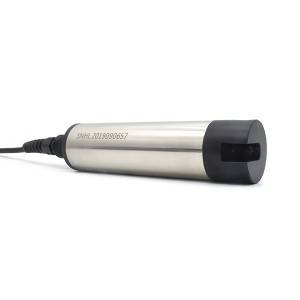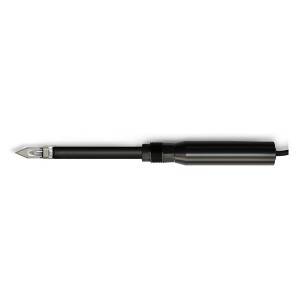Products
-

Digital Turbidity Sensor with Automatic Cleaning
The principle of the turbidity sensor is based on the combined infrared absorption and scattered light method. The ISO7027 method can be used to continuously and accurately determine the turbidity value. According to ISO7027 infrared double-scattering light technology is not affected by chromaticity to determine the sludge concentration value. The self-cleaning function can be selected according to the use environment. Stable data, reliable performance; built-in self-diagnosis function to ensure accurate data; simple installation and calibration. -

CS7800D Online Turbidity Sensor
The principle of the turbidity sensor is based on the combined infrared absorption and scattered light method. The ISO7027 method can be used to continuously and accurately determine the turbidity value. According to ISO7027 infrared double-scattering light technology is not affected by chromaticity to determine the sludge concentration value. The self-cleaning function can be selected according to the use environment. Stable data, reliable performance; built-in self-diagnosis function to ensure accurate data; simple installation and calibration. -

CS7920D Online Flow-through Turbidity Sensor
The principle of the turbidity sensor is based on the combined infrared absorption and scattered light method. The ISO7027 method can be used to continuously and accurately determine the turbidity value. According to ISO7027 infrared double-scattering light technology is not affected by chromaticity to determine the sludge concentration value. The self-cleaning function can be selected according to the use environment. Stable data, reliable performance; built-in self-diagnosis function to ensure accurate data; simple installation and calibration. -

Online Immersion Type Turbidity Sensor
The principle of the turbidity sensor is based on the combined infrared absorption and scattered light method. The ISO7027 method can be used to continuously and accurately determine the turbidity value. According to ISO7027 infrared double-scattering light technology is not affected by chromaticity to determine the sludge concentration value. The self-cleaning function can be selected according to the use environment. Stable data, reliable performance; built-in self-diagnosis function to ensure accurate data; simple installation and calibration. -

Digital Suspended Solids (Sludge concentration) Sensor
The principle of the sludge concentration sensor is based on the combined infrared absorption and scattered light method. The ISO7027 method can be used to continuously and accurately determine the sludge concentration. According to ISO7027 infrared double-scattering light technology is not affected by chromaticity to determine the sludge concentration value. The self-cleaning function can be selected according to the use environment. Stable data, reliable performance; built-in self-diagnosis function to ensure accurate data; simple installation and calibration. -

Digital Suspended Solids (Sludge concentration) Sensor with Automatic Cleaning
The principle of the Suspended Solids (Sludge concentration) is based on the combined infrared absorption and scattered light method. The ISO7027 method can be used to continuously and accurately determine the sludge concentration. According to ISO7027 infrared double-scattering light technology is not affected by chromaticity to determine the sludge concentration value. The self-cleaning function can be selected according to the use environment. Stable data, reliable performance; built-in self-diagnosis function to ensure accurate data; simple installation and calibration. -

Digital Suspended Solids (Sludge concentration) Sensor with Automatic Cleaning
The principle of the Suspended Solids (Sludge concentration) is based on the combined infrared absorption and scattered light method. The ISO7027 method can be used to continuously and accurately determine the sludge concentration. According to ISO7027 infrared double-scattering light technology is not affected by chromaticity to determine the sludge concentration value. The self-cleaning function can be selected according to the use environment. Stable data, reliable performance; built-in self-diagnosis function to ensure accurate data; simple installation and calibration. -

CS1515D Digital pH Sensor
Designed for moist soil measurement.
Easy to connect to PLC, DCS, industrial control computers, general purpose controllers, paperless recording instruments or touch screens and other third party devices. -

CS1543D Digital pH Sensor
Designed for strong acid, strong base and chemical process.
Easy to connect to PLC, DCS, industrial control computers, general purpose controllers, paperless recording instruments or touch screens and other third party devices. -

CS1728D Digital pH Sensor
Designed for Hydrofluoric acid environment. HF concentration < 1000ppm
Easy to connect to PLC, DCS, industrial control computers, general purpose controllers, paperless recording instruments or touch screens and other third party devices. -

CS1729D Digital pH Sensor
Designed for seawater environment.
Easy to connect to PLC, DCS, industrial control computers, general purpose controllers, paperless recording instruments or touch screens and other third party devices. -

CS1737D Digital pH Sensor
Designed for Hydrofluoric acid environment. HF concentration>1000ppm
Easy to connect to PLC, DCS, industrial control computers, general purpose controllers, paperless recording instruments or touch screens and other third party devices.



